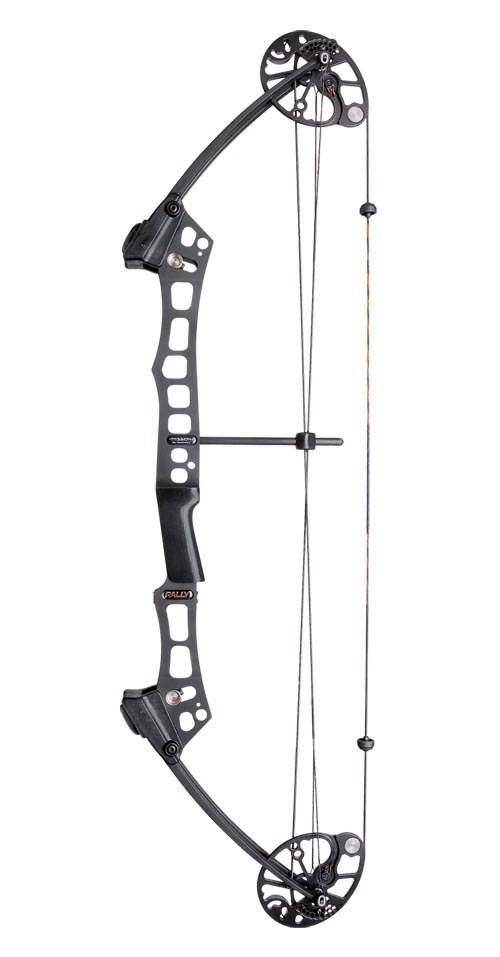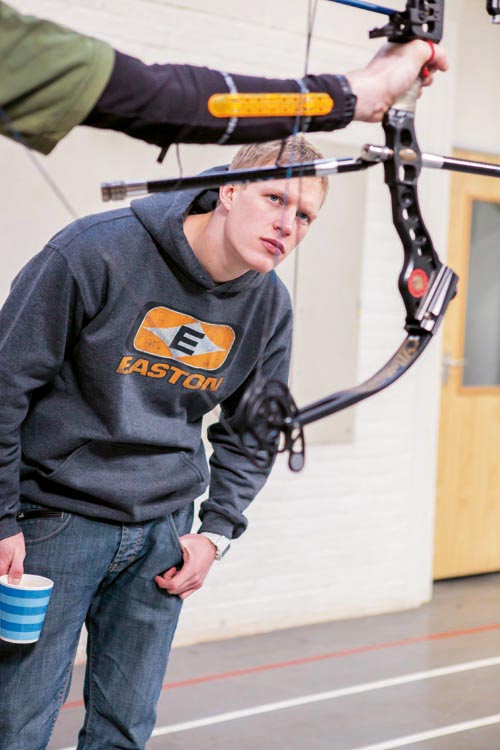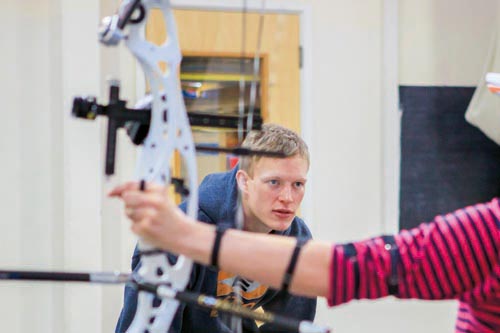There is a wealth of information out there on bow setup, and lots of tips and advice on tuning techniques, but if you’re a complete novice and looking to buy your first compound, hopefully this article will give you some guidance as to what to look for.
Whether or not you are coming from a recurve background, or if you are fresh out of a beginner’s course, taking up compound can be quite daunting. All of the bow companies out there claim to make the fastest, most accurate, most forgiving bow on the market and they have plenty of stats to back this up – so how do you start to choose?
The first bow you look to buy should be an entry-level bow. I would not recommend going out and spending £1,000 on your first bit of kit. Getting something lightweight and adjustable is the most important factor, as you’ll need to develop your technique before an expensive bow will be of any benefit to you. For most shooters this will take a minimum of six months. After this six month period you will have far more idea exactly what your requirements are in terms of size, and also what features you want on a bow.
Probably the most common problem for beginners wanting to take up compound is incorrect draw length. If your draw length is wrong, the fundamentals of good shooting form such as strength through your front arm and a consistent anchor point can prove very difficult. There is no fixed method for measuring a person’s arms or body size and getting a draw length out of it, but since working with a number of mixed ability shooters I have developed a method which gets you very close.
I ask the archer to stand up straight and bring their arms out to their sides at 90 degrees to their body then, using a tape measure, I measure from wrist to wrist. Take this number and divide it by 1.97.
S o for me, my wrist to wrist measurement is 57 inches, and when divided by 1.97 it comes out at just a fraction under 29 inches for my estimated draw length. I have used this same method on a number of shooters and it always gets me very close, usually within half an inch either side of perfect.
o for me, my wrist to wrist measurement is 57 inches, and when divided by 1.97 it comes out at just a fraction under 29 inches for my estimated draw length. I have used this same method on a number of shooters and it always gets me very close, usually within half an inch either side of perfect.
While this method is quite accurate, my advice would be to buy a bow which has adjustable draw length on it. Many of the top-end modern bows are fixed in draw length, so to change by just half an inch can end up costing you big in the form of a new cam or set of cams. I often find that a
shooter’s draw length will increase once they have been shooting a while as their flexibility improves.
Another thing to bear in mind is not to go too mad with draw weight. It’s very tempting to want to buy a 60lbs peak weight bow straight away, but it’s far more important for you to develop good shooting form and technique with your new bow first. Getting a bow where the draw weight is too heavy for you will make the process of learning far more difficult.
Axle length also needs to play a key role in your choice. If you buy a very short axle to axle bow, then this will mean getting a solid anchor point is difficult, as it’s important you index the string on your nose in order to be consistent. Due to the acute string angle on a short axle bow, the string will be a long way from your nose when anchored, and this will also mean that the peep is a long way away, which will make getting a good sight picture difficult. For shooters with a draw length under 26 inches, you should be looking
at an initial axle length of 34-36 inches; for shooters with draw lengths between 26- 29 inches you should have an axle length of 37-40 inches; and for shooters with 30- inch draw lengths and over you need an axle length over 40 inches in order to have a well- established anchor position.
During your first six months of shooting your main focus needs to be on developing your technique, finalising your draw length, and building strength to cope with a stronger bow which will be suitable for competition. If you are very eager to spend lots of money straight away, your money is better spent on top-quality accessories in my opinion.
Buying a top of the line release aid, sight and arrow rest is probably the best way to spend your money. Should you decide to quit, they hold their value better than anything else. Also, technology does not really change much on these items – I have shot the same release aid for the past eight years and the same rest for seven. Spend money on these now and they will last you forever. Bows are constantly changing and your technique will
evolve, and I guarantee that no beginner will buy a top of the line compound bow and have it still be suitable six months later, but your rest, release and sight are transferable to your upgraded bow. Arrows are also ever- changing, so on your initial purchase just buy something cheap to get you started as your required spine will almost certainly change as you evolve as a shooter.
If you decide to take the plunge and purchase your first compound, my recommendation would always be to go to a shop. Buying bows online can save you some money in the short term, but inevitably you won’t get any customer service to help set it up or warranty should it go wrong. If you are looking to buy a bow second-hand, try to get an opinion off a club member first as to whether or not it will be suitable for you.
In recent years there have been a number of beginner and intermediate bows come on to the market, but in my opinion none have been better than the Mission Rally. The Rally retails at £395 in the UK, and you can probably pick one up second-hand for under £300. The great thing for beginner compound shooters about this bow is that the draw length is adjustable from 23 inches to 30 inches which means it will fit almost anybody, and the draw weight is adjustable in 10lb increments just by changing the modules, which is much cheaper than the normal method of swapping limbs in and out. The rally also has an axle length of 37 inches, which means it will give a comfortable string angle for most shooters.
The Mission Rally is available in the UK from my website and all Mathews retailers.




An additional feature which further increases exactness may be the rubber-lined blocks to the pulleys.
A bow and I mean any bow would have pretty limited self defense use. I could see if someone was breaking into your house and had a weapon and you had a bow from a distance or upstairs shooting down….. then maybe!